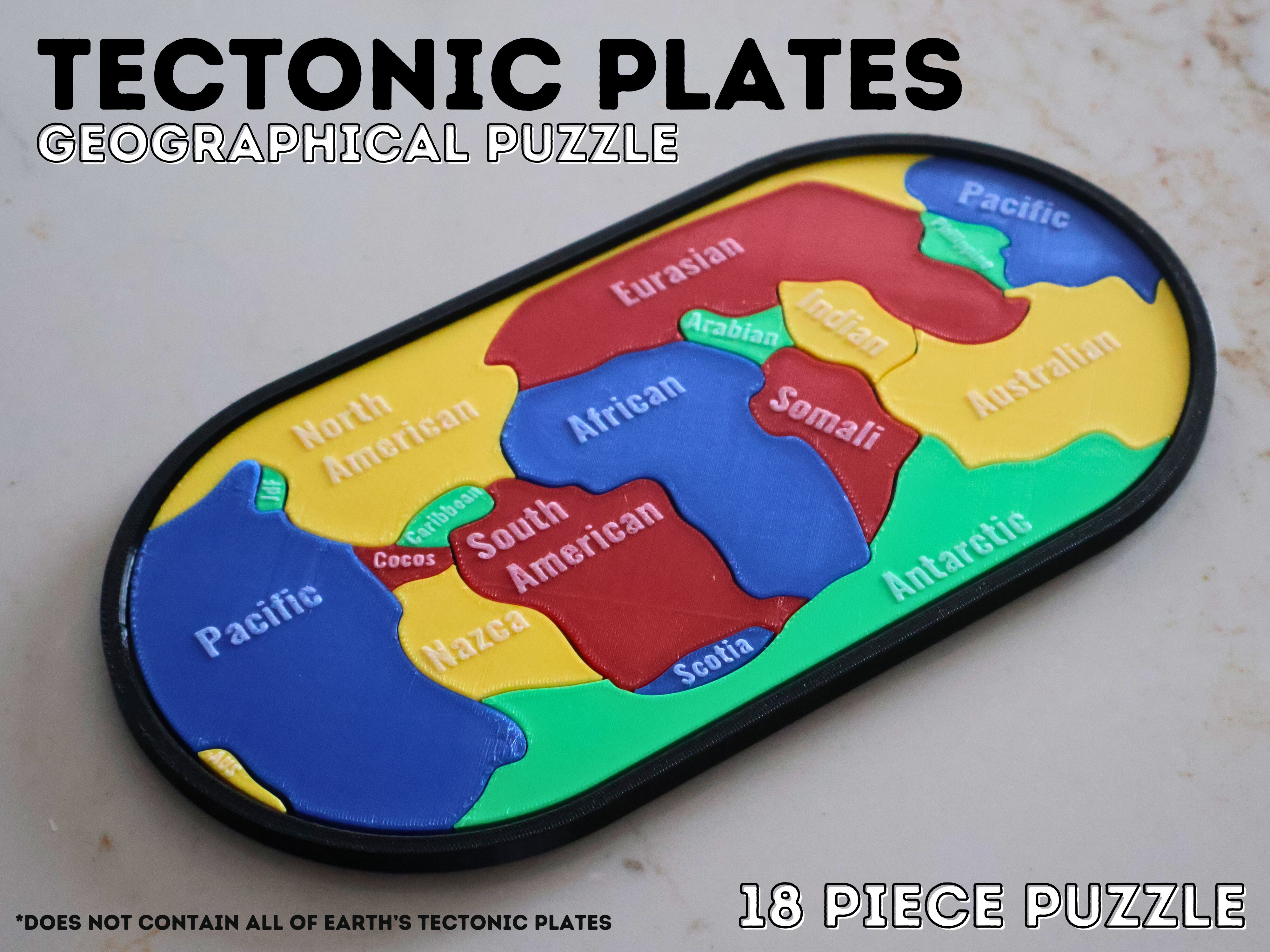Recommended Articles
-
Geological Formation of Sea Stacks
Geography | February 19, 2025
Sea stacks, those dramatic pillars of rock rising from the ocean, are a testament to the relentless power of nature. These geological wonders...
-
FireFly Aerospace - Alpha Rocket
Technology | November 18, 2024
The Firefly Alpha rocket, developed by Firefly Aerospace, represents a significant advancement in the growing field of small satellite launch vehicles. Designed to cater...
-
A New Industry: Space Tourism
Technology | November 18, 2024
Space tourism, once a concept relegated to science fiction, has become a tangible reality in the 21st century. With advancements in rocket technology and the emergence of...
The Earth's Shifting Skin: Unraveling the Mystery of Tectonic Plates
Written By Tyler Wempe
February 23th, 2025

Tectonic Map of the Earth
The Earth, seemingly solid and stable beneath our feet, is a dynamic and ever-changing entity. This dynamism is driven by the movement of tectonic plates, massive slabs of the Earth's lithosphere that interact in a complex dance, shaping continents, creating mountains, triggering earthquakes, and fueling volcanic eruptions. Understanding these plates is crucial to comprehending the planet's geological history and predicting its future.
Advertisement
The Anatomy of a Plate
The Earth's outer layer, the lithosphere, is composed of the crust and the rigid upper portion of the mantle. This lithosphere is fragmented into several tectonic plates, both major and minor. These plates "float" on the semi-molten asthenosphere, the ductile upper portion of the mantle, allowing them to move and interact.

Diagram of the Lithosphere. Credit: Encyclopædia Britannica, Link
Major Plates:
- These include the Pacific Plate, North American Plate, Eurasian Plate, African Plate, Antarctic Plate, Indo-Australian Plate, and South American Plate.
Minor Plates:
- Numerous smaller plates also exist, such as the Nazca Plate, Caribbean Plate, and Philippine Sea Plate, contributing to regional geological activity.
Advertisement
The Driving Force: Mantle Convection
The movement of tectonic plates is primarily driven by mantle convection. Heat generated by the Earth's core and radioactive decay within the mantle creates convection currents. Hotter, less dense material rises, while cooler, denser material sinks, creating a circular flow. These convection currents exert drag on the overlying lithospheric plates, causing them to move.

Diagram of Mantle Convection. By Surachit - Own work SVG, based on the public domain USGS image found here [1] and originally uploaded here, CC BY-SA 3.0, Link
Types of Plate Boundaries
The interactions between tectonic plates occur at their boundaries, which can be categorized into three main types:
Divergent Boundaries:
- At divergent boundaries, plates move apart, allowing magma to rise from the mantle and solidify, creating new crust. Mid-ocean ridges, such as the Mid-Atlantic Ridge, are examples of divergent boundaries. This process, known as seafloor spreading, contributes to the expansion of ocean basins.
Advertisement
Convergent Boundaries:
- At convergent boundaries, plates collide. The type of collision depends on the nature of the plates involved.
- Oceanic-continental convergence: The denser oceanic plate subducts beneath the continental plate, leading to the formation of volcanic mountain ranges, such as the Andes.
- Oceanic-oceanic convergence: One oceanic plate subducts beneath the other, creating volcanic island arcs, such as Japan.
- Continental-continental convergence: When two continental plates collide, neither subducts readily, resulting in the formation of massive mountain ranges, such as the Himalayas.
Transform Boundaries:
- At transform boundaries, plates slide horizontally past each other. The friction between the plates can build up stress, which is released in the form of earthquakes. The San Andreas Fault in California is a prominent example of a transform boundary.
Advertisement
The Impacts of Plate Tectonics
The movement of tectonic plates has profound implications for our planet.
Earthquakes:
- The release of built-up stress at plate boundaries causes earthquakes, which can range from minor tremors to devastating events.
Volcanoes:
- Volcanic activity is closely associated with plate boundaries, particularly convergent and divergent boundaries.
Mountain Formation
- The collision of tectonic plates creates mountain ranges, shaping the Earth's landscape.
Continental Drift:
- Over millions of years, the movement of tectonic plates has resulted in the drifting of continents, altering the distribution of landmasses and oceans.
Ocean Basin Formation:
- Sea floor spreading occurring at divergent plate boundaries creates new ocean floor.
Advertisement
Ongoing Research and Future Implications
Scientists continue to study tectonic plates to better understand their dynamics and predict their behavior. Advanced technologies, such as GPS and satellite imagery, provide valuable data for monitoring plate movements and analyzing geological processes. By deepening our understanding of plate tectonics, we can improve our ability to mitigate the risks associated with earthquakes and volcanic eruptions, and gain a greater appreciation for the dynamic nature of our planet.




